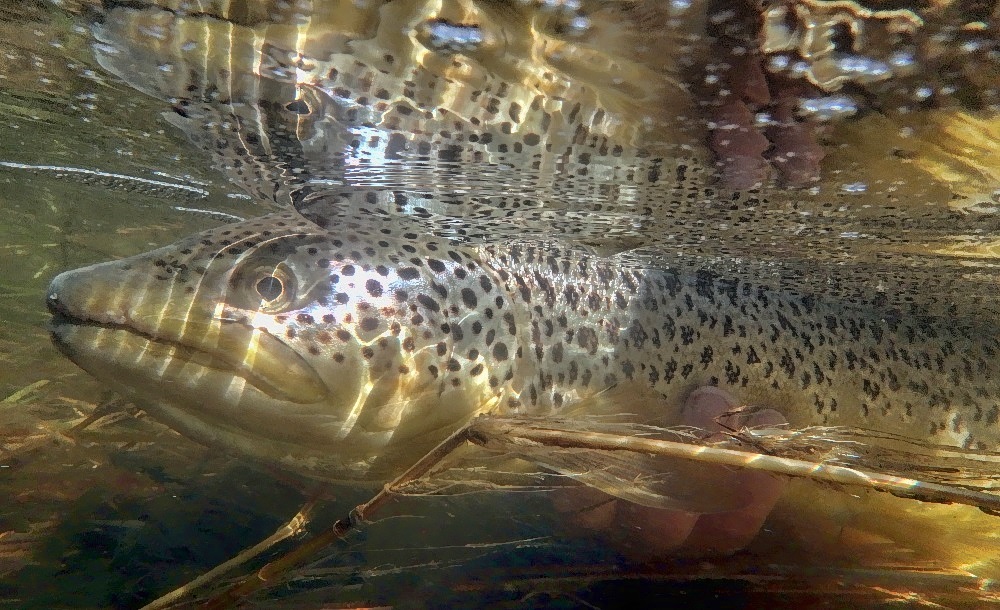This was tied for the annual tying competition in FF&FT. The fly is modern, devised and named by Grant Luke. The materials and tying techniques are more traditional. This is my version of the fly, so a couple of my quirks.
Grunter
Hook: Size 10 to 14 down-eyed dry fly.
Thread: Colour of your choice.
Rib: Tying thread.
Body: Natural hare or squirrel.
Wing: Natural grey CDC (mallard.)
1st Hackle: Brown cock (red game.)
2nd Hackle: Partridge.

1 - Hook in the vice. Thread attached and wrapped back about one thirds of the shank then back towards the eye - stop about one eye width from the hook-eye.

2 - Select grey CDC feathers. Five feathers suits this hook, size 10, These are standard mallard feathers. Sort the feathers so they lie together well and the tips are aligned.

3 - Bundle the CDC to make a neat wing. Measure against the hook shank - the wing should be about the hook length.

4 - Tie in where the thread was hanging and wrap towards the bend.

5 - The idea is to place the wing so it can be lifted and a head wrapped at the eye of the hook.

6 - Cut the butts at an angle.

7 - some of the CDC stub will taper the body, most will be hidden under the hackles.

8 - Wrap the thread along the shank to the bend, to show the length of the body. Then wrap back to the point where hackles will be tied in.

9 - Dub the thread with hare or squirrel dubbing. This is squirrel. Make the twist of dubbing slim and tight.

10 - Wrap the dubbing in even touching turns to the bend of the hook.

11 - Angle the thread and wrap to the front of the body in open turns.

12 - Use a lighter thread colour is you want more segmentation.

13 - Choose and prepare a brown hackle from a grey partridge (yes that's a thing!) Body feathers are more brown than grey and have slimmer stems. Use a grey hackle if that's all you have.

14 - Find the tip of the partridge feather and trim, offer the feather to the hook with the 'good side' towards the bend of the fly...

15 - ...tie in by the tip. Some tying wax on the thread can make things more secure.

16 - Choose a brown cock hackle. this is from a neck, saddle is fine.

17 - Optional - strip one side of the hackle. and prepare bare stem for tying in. Whether you tie in a full hackle or strip one side, the hackle will be tied in with the dull side towards the eye of the hook.

18 - Wrap the hackle forwards four or five turns and tie off. Stripping one side of the hackle means the barbs sits narrower and tighter. Trim off the tip of the hackle.

19 - Wrap the partridge hackle through the cock hackle and make one tight turn at the base of the wing.

20 - Lift the wing and bring the stem of the hackle to the hook eye. bring the thread to the eye and tie down the stem.

21 - Trim off the butt of the partridge hackle. Form a small head and whip finish. Trim off and dab the thread with varnish.

22 - Draw all the hackle fibres forwards. I normally do this out of the vice. And roll the bundle a little...

23 - ...so the barbs cup forwards around the CDC wing.

24 - Tied lighter, some on smaller hooks, some with dyed partridge hackles.

